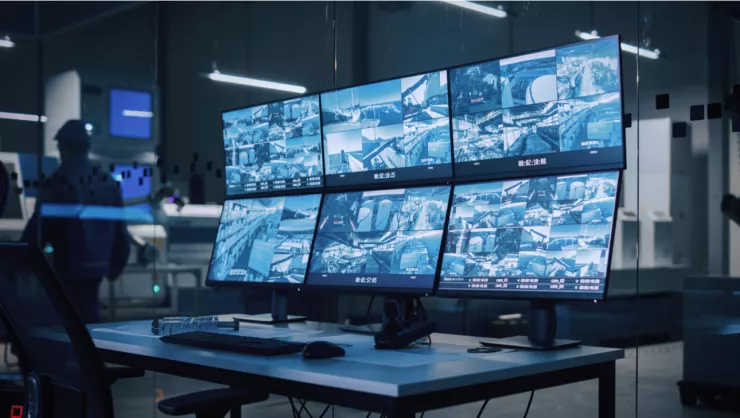5 Ways to Safeguard Your People and Assets

Without proper commercial security hygiene, your company could experience stolen data, business interruptions, and loss of customer trust, which could all impact your bottom line. It’s important to conduct regular safety and security hygiene audits, identify gaps in your program, help reduce risk, improve compliance, and create a plan to increase efficiencies across operations.
Review this checklist to help ensure the health, safety and security of your people and assets.
1. Create or review your password policy.
Passwords are required for more than laptops and email accounts. Consider assets such as alarm systems, security cameras, thermostats, IoT devices, medical equipment, and barcode scanners. Once you have a policy in place, enforce it.
2. Integrate your access control system with a workplace management technology.
Access control can help you manage access for not only full-time employees, but also hybrid employees, visitors, contractors, and vendors. Be sure to account for temporary and contractor badges in your policy. Coordinate with your human resources department to update access as roles change with special consideration for onboarding and offboarding.
3. Secure your cameras from cyber-attacks.
Security cameras can be particularly vulnerable to cyber-attacks regardless of the network you use. Manufacturers regularly release firmware updates to reduce exposure to threats and it’s up to you to find, install, and track them. Reviewing archived footage verifies the path from the device to the electronic storage location so you know the infrastructure is working properly.
4. Tailor your monitoring program.
Self-monitoring requires special protocols that can be outsourced to professional monitors. If self-monitoring, include in your security policy to check batteries, electrical connections, data storage, and camera angles. Examine protocols for false alarms, emergencies, and routing procedures. If your system is professionally monitored, ensure your internal call lists are up to date.
5. Harden your cyber security.
Cyber security reaches beyond VPNs for your main network(s). Anything with a circuit board could be vulnerable to hackers. Some often overlooked items include smart thermostats, elevators, cash registers, and other IoT devices. Many industries require compliance with specific regulations designed to address these vulnerabilities. Keep an inventory of all IoT devices including locations, model numbers, and firmware. Create a plan to move to a physical security information management (PSIM) system where you can use data analytics for root cause analysis.
This checklist can help ensure the health, safety, and security of your people and assets. Commercial security hygiene can prevent stolen data, business interruptions, and loss of customer trust. Safety and security hygiene audits are an essential part of a larger strategy to identify gaps in your program, reduce risk, and improve compliance.




















